Body Piercing: The Ultimate Guide For Body Modification Lovers
Body piercing blends expression and ornamentation with precisely placed jewelry to express personality and style.
On Dec 28, 2023 – 35 minutes read
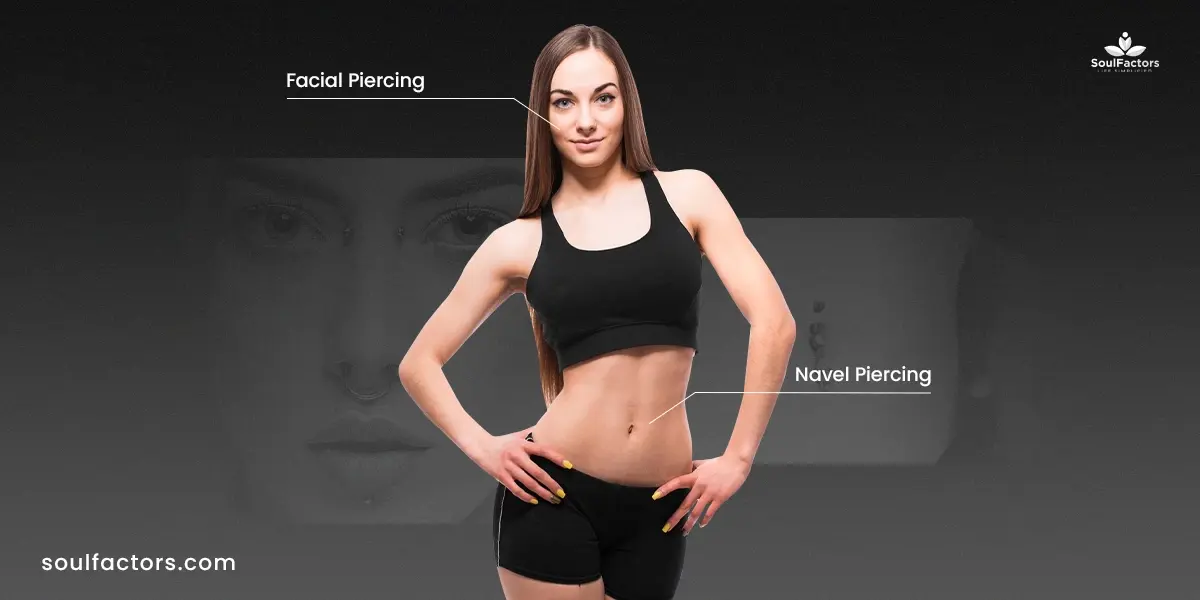
Hey there! Ever wondered why that little sparkle on someone’s nose can look so cool, or why an earring can make such a bold statement? Body piercings are way more than just bling — they’re a journey, a heritage, and sometimes, a little act of rebellion. They’ve been around forever, and guess what? They’re not going anywhere. This deep dive we’re about to take? It’s all about the ins, the outs, and the in-betweens of body piercing. Whether it’s your first or your fiftieth, we’ve got the lowdown on everything from earlobes to eyebrows. So, let’s get started and find out why these tiny pieces of metal can mean so much.
The History And Cultural Significance Of Body Piercings
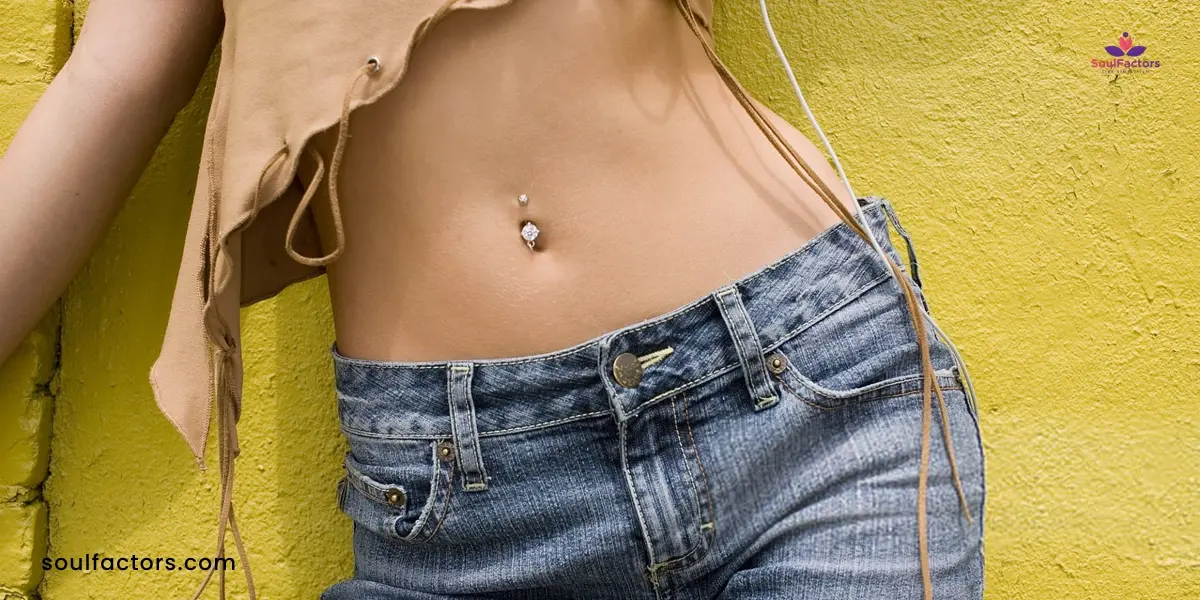
Body piercings are no new fad. They’re as old as the hills and packed with stories. Piercings have been a part of human culture since the get-go. Way back when, in ancient times, folks didn’t just wake up and decide to get body piercings. It was deep stuff, often wrapped up in beliefs, rites of passage, or status symbols. Take the Egyptians, for example — only the pharaoh had the right to have his navel pierced, a sign of his direct line to the gods.
In the Americas, the Mayans and Aztecs rocked tongue piercings, not for style, but for spirituality, communing with the gods through the pain of the body piercing. Over in India, the nose piercing found its roots in Ayurvedic medicine, believed to ease the pain of childbirth. And those aren’t just quaint tales from the past; they’re the real deal, shaping how we view body piercings today.
In many cultures, body piercings were a gendered affair — women wore nose rings to symbolize marriage, while men sported earrings to mark achievements or rank. The ancient Romans, for example, saw pierced nipples on men as a sign of strength and virility. Women in Borneo pierced their forearms as a way to show off their skills and accomplishments.
The Evolution Of Body Piercings: From Tradition To Trend
Fast forward a few centuries and body piercings(1) have taken on a whole new vibe. They’ve shaken off most of their traditional chains and strutted onto the fashion stage, a trend that’s as much about personal style as it is about making a statement. These days, body piercings have become a way for people to express their personalities, showcase their creativity, and even honor their heritage.
The modern twist on body piercings doesn’t erase their past; it adds to it. Today’s choices — whether it’s a subtle stud or a daring dermal — often echo ancient practices while giving them a contemporary edge.
Don’t think for a second that the cultural significance has vanished. In many places, those ancient meanings are still kicking — body piercings continue to be a profound expression of cultural identity. They’re a piece of history you can wear and a modern twist on self-expression, all rolled into one.
Ear Piercings
So, you’re thinking about adding some bling to your ears? Whether it’s your first time in the body piercing chair or you’re looking to add another cool spot to your collection, ear piercings are where it’s at. They are also known as gateway piercings since the earlobe is extra fleshy and less intimidating to pierce. They’re like the perfect pair of jeans — classic, go with anything, and you can never have too many. And the best part? You’ve got a whole playground of spots on your ear to choose from!
Types Of Ear Piercings:
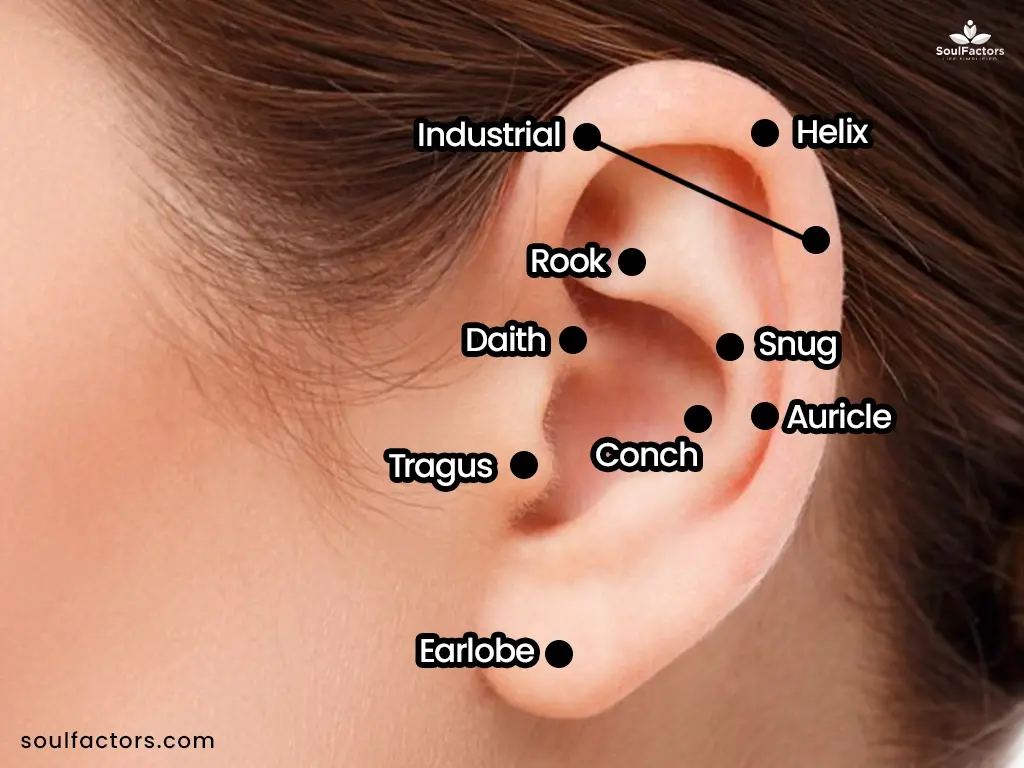
- Earlobe: The earlobe is everyone’s first love when it comes to body piercings. It’s like the vanilla ice cream of the piercing world — a timeless classic. Plus, it’s low on the ouch scale and you can rock anything from diamond studs for a hot date to funky hoops for a night out with friends.
- Helix: Cruising up to the top of your ear, the helix is that cool-kid body piercing that’s all the rage. It’s the perfect spot for a tiny hoop or a sparkly stud that catches the light just right when you’re flipping your hair or putting on your shades.
- Tragus: That little nub of cartilage that’s been feeling left out? Give it some love with a tragus piercing. It’s a subtle statement that whispers I’m cool without trying too hard. And it’s surprisingly versatile — pop in a dainty gem or a small hoop, and watch it become the talk of the town.
- Conch: Now, if you’re into making a bit more of a statement, let’s talk about the conch. Nestled right in the middle of your ear, this one’s like the drum solo at a rock concert — bold and impossible to ignore. Whether you go with a stud or a hoop, it’s a head-turner.
- Rook: Ready to level up? The rook’s got your back. This piercing’s a bit more off the beaten path, tucked away in your ear’s inner ridge. It’s like the secret ingredient that takes your look from great to Who is that? And yeah, it might pinch a bit more, but the street cred? Worth it.
- Daith: Nestled in the nook of your ear’s inner cartilage, the daith piercing(2) makes a subtle yet impactful statement. Known not just for its aesthetic appeal but also rumored (though not medically verified) to offer migraine relief, this piercing could be a game-changer. Just keep an eye on it during healing—this area can be prone to getting infected if not cared for properly.
- Industrial: Looking for something bold and glamorous? The industrial piercing connects two piercings in the upper ear with a single barbell. It’s a standout choice that’s as industrial-strength cool as it sounds. And while it may look tough, leave the piercing gun behind—this one’s all about precision with a needle.
- Auricle: Halfway between your earlobe and the top of your ear lies the auricle piercing. It’s versatile, allowing for both studs and rings, perfect for anyone looking to add to their ear piercing chart. And if you’re considering doubling up, an auricle piercing pairs brilliantly with a double earlobe piercing.
- Snug: The snug piercing sits along the inner cartilage ridge of your ear, offering a unique aesthetic that’s just snug enough to stand out. It’s an intimate style that’s a tad more discreet than its cousins but still makes a statement. Remember, snug doesn’t mean tight—give your piercing some breathing room to avoid infection.
| 😃Fun Fact: Did you know high ear piercings on sailors were once believed to improve eyesight? And while we can’t guarantee better vision, a helix or auricle piercing will surely improve your style points! |
Ear Piercing: Aftercare Instructions
Ear Piercing Aftercare
- Keep it clean: Wash your hands before touching the body piercing. Use saline solution or gentle soap and water twice a day.
- Don’t twist or turn: Your jewelry should stay put while the piercing heals.
- Stay dry: Pat the area dry with a clean, disposable paper product. Cloth towels can harbor bacteria.
How To Clean An Ear Piercing?
- Soak a clean cotton swab in saline solution and gently clean around the front and back of the piercing.
- Avoid alcohol and peroxide; they can irritate the body piercing.
Treating An Infected Ear Piercing
- Continue cleaning as usual, but more frequently.
- Apply a warm compress to soothe irritation.
- If symptoms persist, consult a professional.
FAQs
Prices vary widely, from about $20 at a mall kiosk to $100 or more at a high-end studio.
Earlobes typically take 6-8 weeks, while cartilage piercings can take 3-6 months.
Wait for at least a month before swimming in pools, lakes, or oceans to avoid infection.
It’s likely a buildup of dead skin cells and oils. Regular cleaning usually keeps it at bay.
Facial Piercings
Ever thought about adding a bit of edge to your look with a facial piercing? It’s not just about fashion, but a form of self-expression that’s been around for ages. Facial piercings(3) can range from the subtle to the bold, each type telling its own story. Whether it’s a classic nose ring that reflects cultural heritage or a daring eyebrow piercing that screams avant-garde, these adornments are more than just skin deep. They’re a way to stand out, fit in, or just be yourself. So, let’s explore the world of facial piercings and see what each style brings to the table (or rather, to the face!).
1. Nose Piercings
Nose piercings are like the little black dress of facial jewelry—a timeless and popular type of body piercing across the globe. Whether you’re going for subtle sophistication with a tiny stud nose piercing or making a statement with something bolder, there’s a style for every face and every taste.
Types Of Nose Piercings:
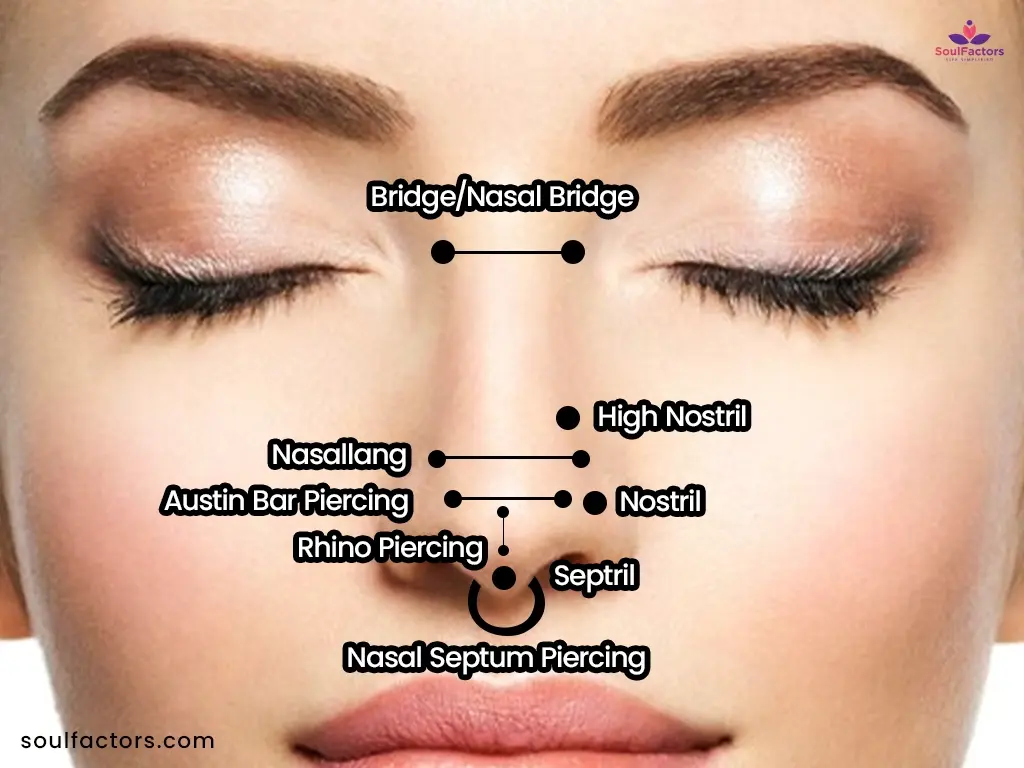
- Nostril: The classic nostril piercing is all about versatility. Sport a discrete stud for everyday elegance or switch it up with a hoop for some added flair. It’s the perfect starter for anyone new to nose piercings and a staple for those who love to double up with a second—or even a triple nostril piercing.
- High Nostril: Just like it sounds, the high nostril takes the traditional nostril piercing a notch higher on the nose, giving you a fresh and unique look. It’s a bit more discreet but equally stylish, perfect for those who want to stand out subtly.
- Bridge/Nasal Bridge: A bridge piercing is placed horizontally across the bridge of the nose. It’s a striking statement piece that’s bound to turn heads and raise brows—in the best way.
- Nasallang: For the daring, the nasallang runs horizontally through both nostrils and the septum, giving the illusion of two separate piercings. It’s complex, it’s cool, and it’s got character. Just be ready for a bit more ‘ouch’ during the piercing process.
- Septril: A septril is for the piercing aficionado—it’s a combo that usually starts with a stretched septum piercing and then goes a step further. It’s intricate, it’s rare, and oh, it’s a conversation starter.
- Austin Bar Piercing: For a minimalist yet bold statement, the Austin bar is a horizontal piercing at the tip of the nose. It’s unconventional and offers a sleek, modern look.
- Rhino Piercing: Named for its resemblance to a rhinoceros horn, this vertical piercing goes through the tip of the nose. It’s a daring choice that stands out from the crowd.
- Nasal Septum Piercing: A classic through the nasal septum, this body piercing allows for a wide range of jewelry, from discrete horseshoes to ornate septum clickers. It’s versatile and can be hidden or shown off as you like.
- Double Nostril Piercing: Why settle for one when you can have two? The double nostril piercing allows for symmetrical or asymmetrical styling, perfect for those who love to experiment with their look.
- Triple Nostril Piercing: Taking it up a notch, the triple nostril piercing offers even more space for creativity. It’s a bold statement that’s meant for the daring.
Nose Piercing Aftercare
Caring for your new nose piercing is key to a quick healing and infection-free experience. Here’s the lowdown:
- Cleaning Nose Piercing: Gently dab around the area with a saline solution or mild, fragrance-free soap. Avoid harsh cleansers or alcohol-based products that can irritate the skin. A clean cotton swab is your best friend here, perfect for softly wiping around the stud nose piercing or that new double nose piercing.
- Treating Infected Nose Piercing: Signs to watch for include redness, unusual swelling, and pus discharge (not your average nose piercing bump). Don’t panic – keep up with regular cleaning, but maybe step it up a notch. If things look more serious (think major keloid on nose piercing or persistent pain), it’s time to check in with your piercer or a doctor.
😃Fun Fact: Did you know that in some cultures, a nose piercing on the left signifies marriage? In India, for instance, a left nostril ring often symbolizes that a woman is married, blending beauty with tradition.
FAQs
Your standard nostril piercing takes about 4-6 weeks to heal, but tougher spots like a septum piercing on a big nose might take a bit longer.
Prices vary but typically range from $30 to $80, depending on the studio’s location and the jewelry’s fanciness.
In some cultures, the left side is believed to ease childbirth and menstrual pain. In other cultures, the side of a nose piercing gives away the region the person belongs to. But, whether it’s a double nose piercing or a single, it’s all about your personal style and cultural preferences.
Most people say it’s a quick pinch. The level of discomfort can vary, but it’s generally short-lived.
Beyond fashion, a nose ring can symbolize rebellion, freedom, or cultural heritage. It’s not just a piece of jewelry but a form of self-expression.
2. Lip Piercings
Let’s have a chat about lip piercings, a common one in body piercing, shall we? Think of them as your lips’ accessories, giving you that extra oomph with every word you speak and every smile you flash. Whether you’re leaning towards a subtle charm or aiming for full-on rockstar vibes, lip piercings are a fantastic way to say a lot without speaking a word. You know, it’s not just about putting a ring or a stud on your lip; it’s about wearing your attitude, your story. So, if you’re ready to add that spunky twist to your look, let’s take a look into the types of piercings available and how to care for them!
Types of Lip Piercings
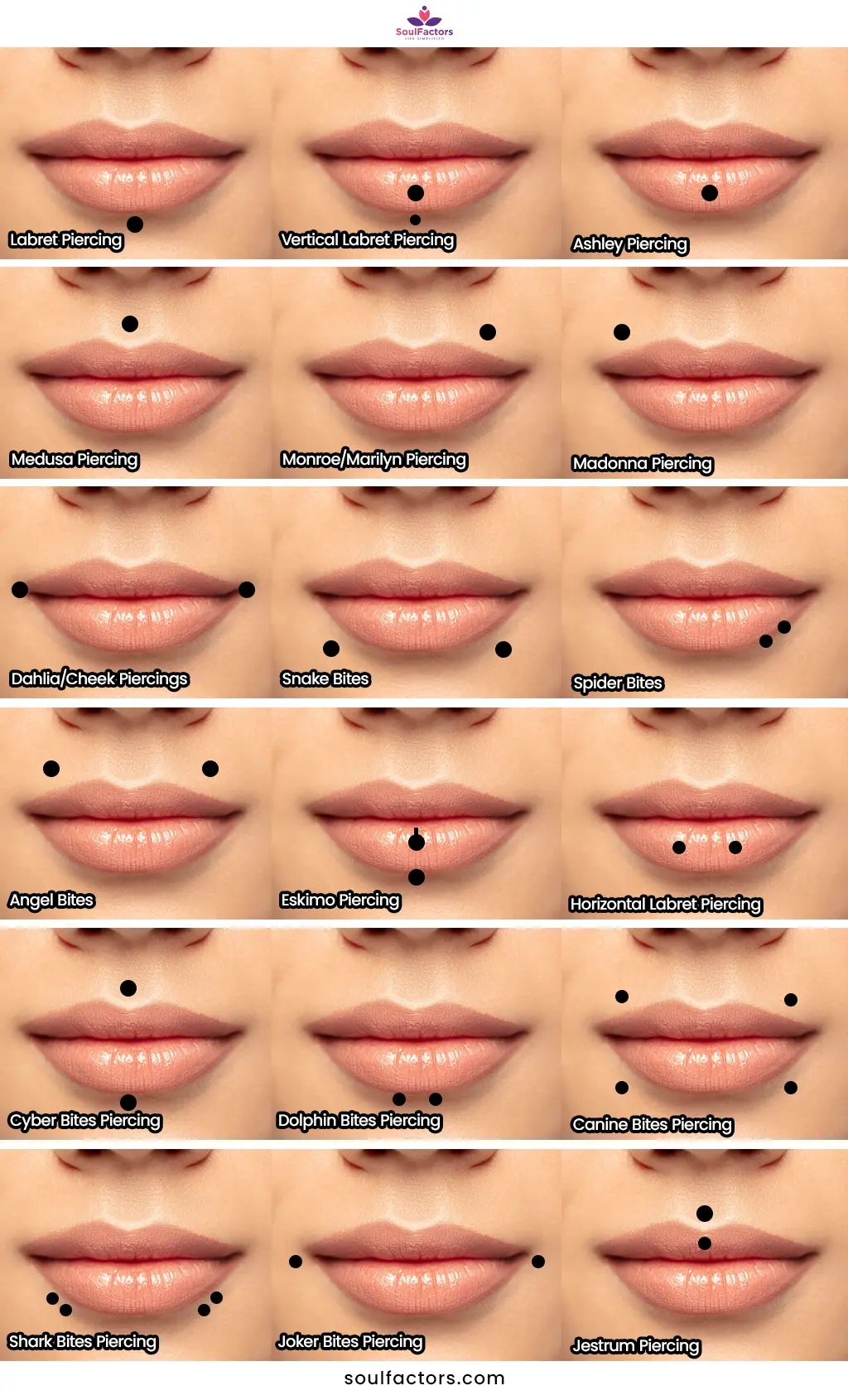
- Labret Piercing: This one’s a classic – sitting pretty just below your lower lip. It’s straightforward but speaks volumes. Whether you pop in a stud or a hoop, the labret is versatile enough to match any mood or style. It’s like the little black dress of lip piercings.
- Vertical Labret Piercing: Now, this is a twist – literally. The vertical labret runs top to bottom through your lip, offering a unique look that stands out. It’s a bit more daring than the standard labret, adding a line of metal that’s visible both inside and out.
- Ashley Piercing: Think of it as the Labret’s edgier cousin. The Ashley piercing sits in the same spot but takes a secret route, exiting inside the mouth instead. It’s like having an undercover side to your piercing that only shows off a single stud or gem on the outside.
- Medusa Piercing: Positioned regally above your upper lip, right under the septum, the Medusa piercing makes a bold statement. It’s a spot that demands attention, perfect for those who love to stand out in a crowd.
- Monroe/Marilyn Piercing: Inspired by Marilyn Monroe’s iconic beauty spot, this piercing adds a touch of Hollywood glamour. Placed on the left side above the upper lip, it’s a subtle nod to timeless beauty with a piercing twist.
- Madonna Piercing: Just like the Monroe, but flip it to the right. It’s a tribute to another style icon, Madonna, mirroring her famous beauty mark. This piercing is all about capturing that star quality.
- Dahlia/Cheek Piercings: These are a bit of a showstopper, located at the corners of your mouth. They give off a theatrical vibe, often associated with a bold and dramatic aesthetic. Dahlias are for those who want their piercings to be part of their expression.
- Snake Bites: Double the fun with two symmetrical piercings on either side of the lower lip. They’re a popular choice for those looking to make a statement. Snake bite piercings offer a balanced yet striking look.
- Spider Bites: Imagine two piercings, close together, on one side of your lower lip. It’s like the Snake Bites’ close-knit sibling. Spider bite piercings are for those who want something a bit different but not too over the top.
- Angel Bites: Similar to Snake Bites, but they grace your upper lip. Angel bite piercings are a perfect blend of angelic and edgy, offering a balanced yet eye-catching look that’s sure to turn heads.
- Eskimo Piercing: This one’s for the adventurous at heart. The Eskimo piercing makes a full arc, entering the lip and exiting through the bottom. It’s a bold choice that definitely stands out, offering a unique alternative to the more common lip piercings.
- Horizontal Labret Piercing: A little twist on the traditional, the horizontal labret runs parallel inside the lip. It’s a discreet choice for those who love the idea of a piercing that’s there, but not in-your-face visible.
- Cyber Bites Piercing: Why settle for one when you can have the best of both worlds? The Cyber Bites combine the Medusa and the Labret, one above and one below your mouth’s center. It’s symmetrical, it’s stylish, and it makes a statement.
- Dolphin Bites Piercing: Sitting neatly in the center of your lower lip, Dolphin Bites feature two closely spaced piercings. It’s a subtle nod to the Snake Bites but with a more understated charm, perfect for those looking to add a hint of edge without going too far.
- Canine Bites Piercing: Canine Bites are a striking combo of Angel and Snake Bites – two piercings above and two below. This style gives you a full circle of cool, framing your smile with a symmetrical set of studs or rings.
- Shark Bites Piercing: Double the impact of Spider Bites with Shark Bites. This style places two close piercings on both sides of the lower lip. It’s a bolder choice, perfect for those who want to make their lips the centerpiece of their look.
- Joker Bites Piercing: Positioned on the outer corners of the lower lip, the Joker Bites piercing is dramatic and distinctive. It’s a playful yet edgy style, giving off a vibe that’s both whimsical and daring.
- Jestrum Piercing: The Jestrum is a vertical piercing above the upper lip, similar to the Medusa but with a visible end at both the top and bottom. It’s a unique and slightly more noticeable variation, adding a vertical element to your lip piercing collection.
Lip Piercing Aftercare
Keeping your new lip piercing clean and healthy is crucial. Start by gently cleaning the area twice daily with saline solution or a mild, non-alcoholic soap. Use a clean cotton swab or pad to carefully remove any buildup around the piercing. Avoid touching it with unclean hands, and resist the urge to play with the jewelry.
To prevent infection, steer clear of makeup, lotions, or other products near the piercing site. Remember, a well-cared-for piercing is not only healthier but will also heal faster and look better in the long run. Whether it’s a side labret ring or a middle bottom lip piercing, good aftercare is key to maintaining its beauty and your health.
FAQs
The price of a lip piercing varies, typically ranging from $40 to $100, depending on the studio and jewelry choice.
A standard lip piercing usually heals within 4 to 6 weeks, though this can vary from person to person.
This typically refers to a single piercing on the lower lip, often adorned with a stud or small ring.
Do keep the area clean and dry; don’t touch it unnecessarily. Avoid spicy foods and alcohol, which can irritate the piercing.
It’s best to wait until the piercing has started to heal, which usually takes a couple of weeks, to avoid irritation and potential infection.
Ensure lip jewelry doesn’t constantly rub against teeth and visit a dentist regularly for check-ups.
Oral Piercings:
Next on our list of body piercings is oral piercing. These are a fascinating blend of history, culture, and personal expression. For centuries, they’ve been more than just decorative – they’re a language of identity and tradition. From the ancient Mayans and Aztecs to modern-day enthusiasts, these body piercings have served as symbols of status, spirituality, and rebellion. In different cultures, an oral piercing can be a rite of passage, a fashion statement, or even a spiritual healing practice. Today, they continue to be a popular form of self-expression, offering a unique way to adorn one’s smile with a touch of individuality.
1. Frenulum Piercings
Tucked away inside the mouth, frenulum piercings are a unique and subtle form of body art. These piercings are located in the thin tissue connecting the lips to the gum or under the tongue. Gaining popularity for their discreet yet edgy appeal, they can only be seen when you flash a smile or speak.
A frenulum piercing whether it’s the piercing inside the upper lip (Smiley) or the piercing under the top lip (Frowny), offers a unique way to enhance your oral aesthetics for those looking to add a hidden gem to their body piercing collection. While not as visible as a lip frenulum piercing, these styles provide a subtle yet striking form of self-expression. Frenulum piercings offer a playful secret, a personal statement shared on your terms.
Frenulum Piercing Types
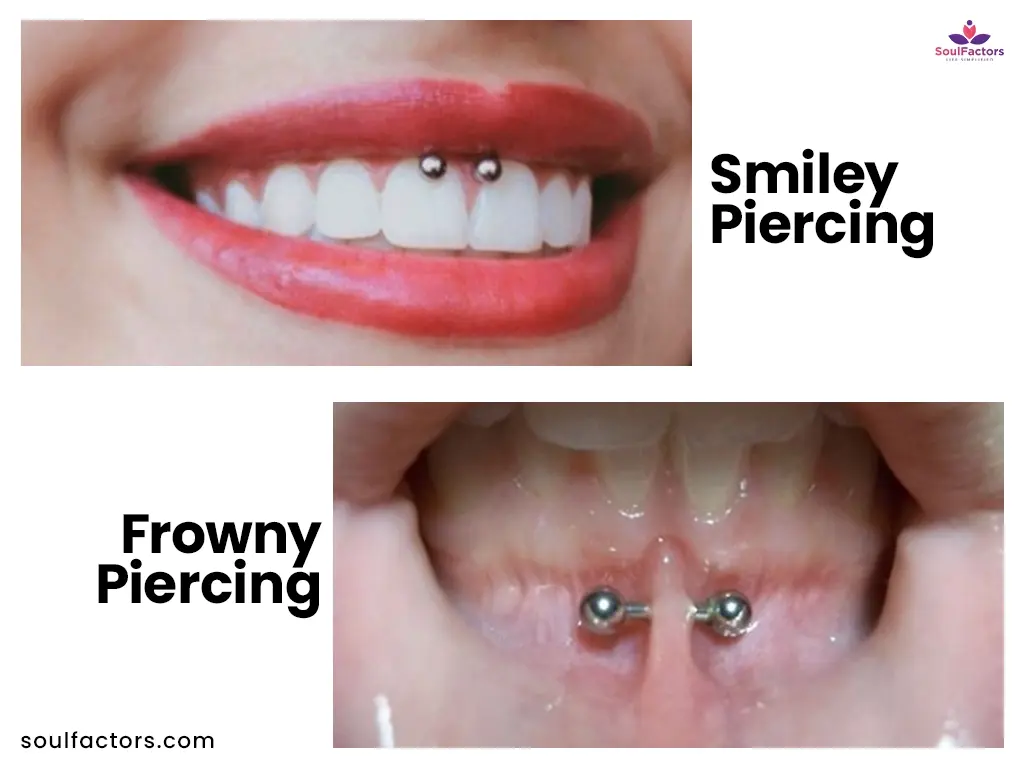
- Smiley Piercing: The Smiley is a subtle surprise that’s all about joy. It’s a piercing through the upper lip frenulum, only visible when you smile. It’s like a little secret that pops out in moments of happiness, adding a spark to your expression. Whether it’s a delicate stud or a small ring, a smiley piercing is a playful addition to your smile.
- Frowny Piercing: On the flip side, the Frowny sits on the lower lip frenulum, visible when you frown or sometimes talk. It’s a bit more rebellious, a little nod to those who want to express their edgier side. It’s subtle yet impactful, adding a twist to your lower lip with every word you speak.
Aftercare For Frenulum Piercings
Frenulum piercings, a form of body piercing, generally heal in about 4 to 8 weeks, but it’s crucial to follow proper aftercare to prevent infection(4). Keep the piercing clean with saline solution and avoid playing with the jewelry. If you notice any signs of infection like excessive redness, swelling, or discharge, step up your cleaning routine. If symptoms persist, consult a professional. Remember, oral hygiene is key – regular brushing and mouthwash can help keep your piercing healthy. And when it comes to eating, take it easy for the first few days to avoid irritation.
FAQs About Frenulum Piercings
Frenulum piercings are generally safe when done by a professional, but it’s important to follow aftercare instructions to avoid complications.
Wait until your piercing is fully healed before changing the frowny or smiley piercing jewelry. This is typically around 8 weeks.
Expect a quick pinch during piercing and some tenderness afterward, but overall, the pain is usually minimal.
Stretching a frenulum piercing should be done gradually and with care. Always consult with a body piercing professional before attempting to stretch your piercing.
2. Gum Piercings
Gum piercings, a less-trodden path in the world of body art, offer a unique blend of boldness and subtlety. Nestled within the oral cavity, these piercings are not just about aesthetic appeal but also resonate with cultural underpinnings. They represent a daring choice for those who wish to explore beyond the conventional realms of body piercings.
Whether it’s a nod to cultural traditions or your aesthetic choice, gum piercings provide a distinctive way to adorn one’s smile. Their unique placement requires expert care, making them a choice for the adventurous and dedicated piercing enthusiast.
Types Of Gum Piercings
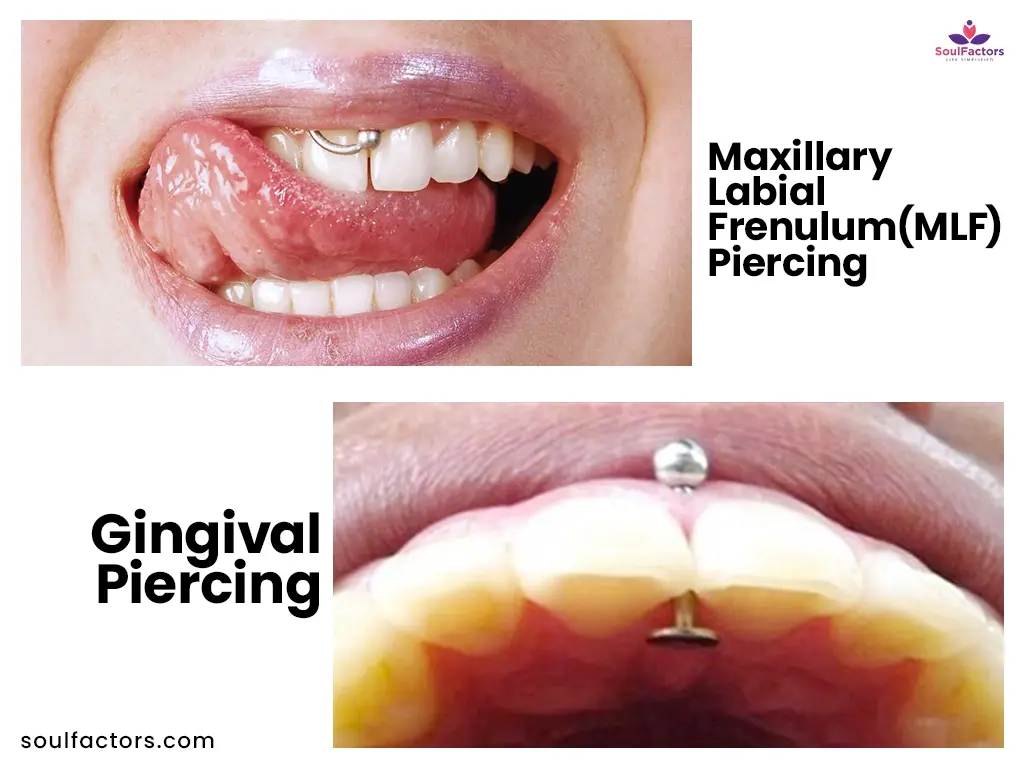
- Maxillary Labial Frenulum (MLF) Piercing: The MLF piercing is an intriguing choice, situated in the upper lip’s frenulum – that small fold of tissue connecting your lip to the gum. It’s a piercing that’s hidden in plain sight, visible only when you smile or speak. This piercing offers an element of surprise and a subtle nod to those who appreciate the less obvious forms of expression. It’s relatively uncommon, which adds to its allure, making it a favorite for those seeking a unique oral piercing.
- Gingival Piercing: The gingival piercing sits along the gum line, creating a stunning visual effect that’s quite unlike any other oral piercing. It’s a bold statement, offering an edgy yet sophisticated look. This piercing type requires precision and expertise due to its proximity to the teeth and sensitive gum tissue. While not as prevalent as other oral piercings, its distinctive placement makes it a captivating choice for body-piercing aficionados looking to push the boundaries of conventional body art.
Aftercare For Gum Piercings
- Gum Piercing Aftercare Food: Post-piercing, it’s all about keeping things gentle on your mouth. Stick to soft, non-spicy foods like yogurt or smoothies. Avoid hot beverages and anything too crunchy or chewy that could irritate the piercing site. Eating should be a careful, thoughtful process to ensure your new gum piercing heals beautifully.
- Gum Piercing Aftercare First Day: Right after getting your gum or tooth pierced, the key is to keep the area clean and avoid irritation. Rinse your mouth with saline solution or alcohol-free mouthwash after eating to prevent food particles from affecting the piercing. Avoid smoking or drinking alcohol, as they can hinder the healing process.
- General Oral Piercing Aftercare: Consistent hygiene is crucial for any mouth piercing. Rinse your mouth gently but thoroughly a few times a day with a saline solution. Be cautious with oral hygiene products – gentle, alcohol-free options are best. Regular brushing with a soft-bristled toothbrush will keep the piercing area, and your entire mouth, healthy.
FAQs
Expect the healing process to take several weeks. Keep the area clean and follow your piercer’s aftercare instructions closely. If you notice any signs of infection, consult with your piercer or a dentist immediately.
While everyone’s pain tolerance varies, gum piercings can be sensitive due to the soft tissue involved. The initial piercing might be uncomfortable, but this should subside as the area heals.
Gum piercings require expert hands and meticulous aftercare. Choose a reputable piercer experienced in mouth piercings to ensure safety and minimize risks. Regular check-ups can also help in maintaining the health of your piercing.
3. Tongue Piercing
Tongue piercing, a practice with roots in ancient rituals and spiritual symbolism, has evolved into a popular form of modern styling. Historically, it was a rite of passage or a symbol of status in various cultures. Today, it’s embraced for its bold aesthetic and the unique statement it makes. The diversity in tongue piercing styles—from the classic midline to the striking snake eyes—reflects its popularity and adaptability in contemporary body art. It’s not just about making a fashion statement; for many, it’s an intimate form of personal expression and identity.
Types Of Tongue Piercings
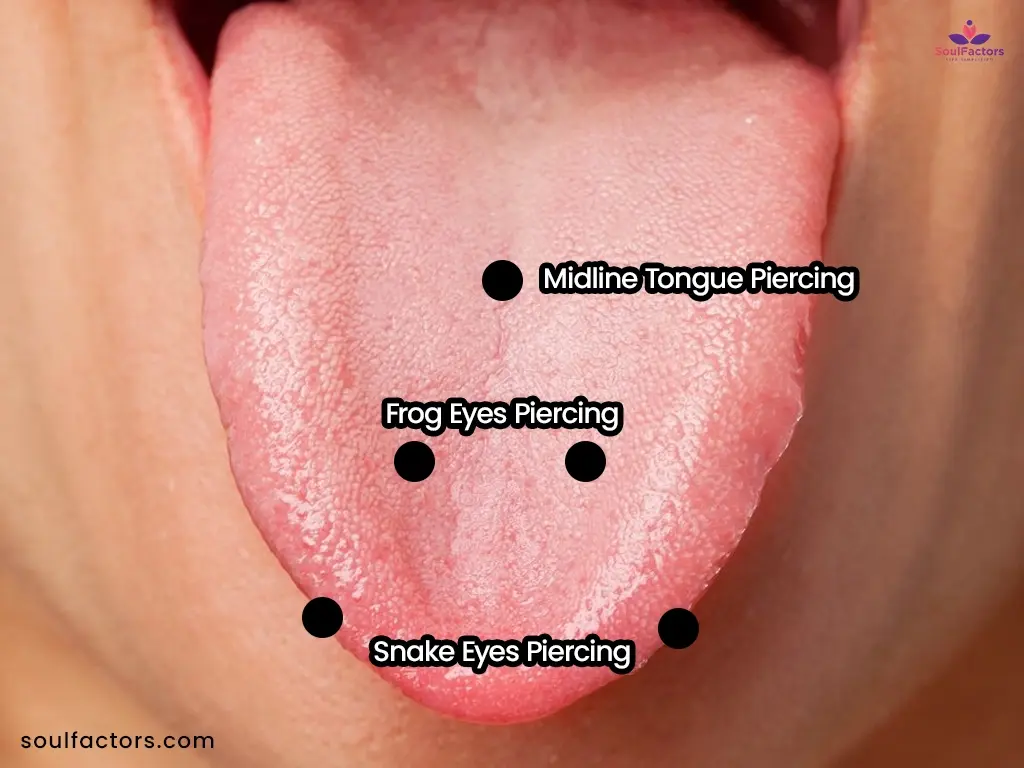
- Midline Tongue Piercing: The classic midline tongue piercing remains the most popular choice. Positioned centrally on the tongue, it offers a balanced and symmetrical look. This style is versatile, allowing for various types of tongue-piercing jewelry, from subtle studs to bold tongue rings. It’s a timeless choice for those starting their journey into tongue piercings.
- Snake Eyes Piercing: The snake eye tongue piercing, or simply snake eye piercing, is a striking horizontal piercing at the tongue’s tip. It’s like having two gems shining at the front of your mouth. This piercing is known for its unique appearance but requires careful consideration due to the risk of infected tongue piercing and its impact on tongue mobility.
- Horizontal or Vertical Tongue Piercing: Unlike the midline piercing, horizontal or vertical tongue piercings offer an unconventional take. The vertical style runs along the tongue’s length, while the horizontal orientation crosses the tongue, presenting a distinctive aesthetic. These variations are for the bold at heart, adding an edgy twist to the traditional tongue piercing.
- Frog Eyes Piercing: Also known as frog eyes tongue piercing, this style features two piercings placed side by side at the tongue’s tip, resembling a frog’s eyes. It’s a less common choice, perfect for those looking to make a unique statement with their double tongue piercing.
Aftercare For Tongue Piercings
- How to Clean: Clean your tongue piercing twice a day with a saline solution or an alcohol-free, antibacterial mouthwash. This routine is crucial for preventing infection and promoting healing. Gently rinse your mouth after meals and before bed to keep the piercing site clean.
- Caring for an Infected Tongue Piercing: Signs of infection include excessive redness, swelling, pain, or discharge. If these symptoms occur, continue with regular cleaning and consult a professional. Avoid removing the jewelry unless advised by a professional, as this can lead to complications.
- General Tongue Piercing Aftercare: In the first few weeks, stick to soft, non-acidic foods to ease discomfort. Avoid alcohol, spicy foods, and smoking, as they can irritate the piercing. Maintain good oral hygiene, but be gentle around the piercing site to avoid irritation.
FAQs
Usually, it takes 4-6 weeks for a tongue piercing to heal.
Prices vary but typically range between $30 and $100.
Beyond aesthetics, some get it for personal or cultural reasons.
It’s a quick, sharp pain followed by temporary discomfort.
Good oral hygiene and avoiding irritants are key to a healthy piercing.
| 😃Fun Fact: Wondering about kissing post-tongue piercing? It’s best to wait until the piercing has started to heal to avoid complications – usually a few weeks. |
4. Uvula Piercing
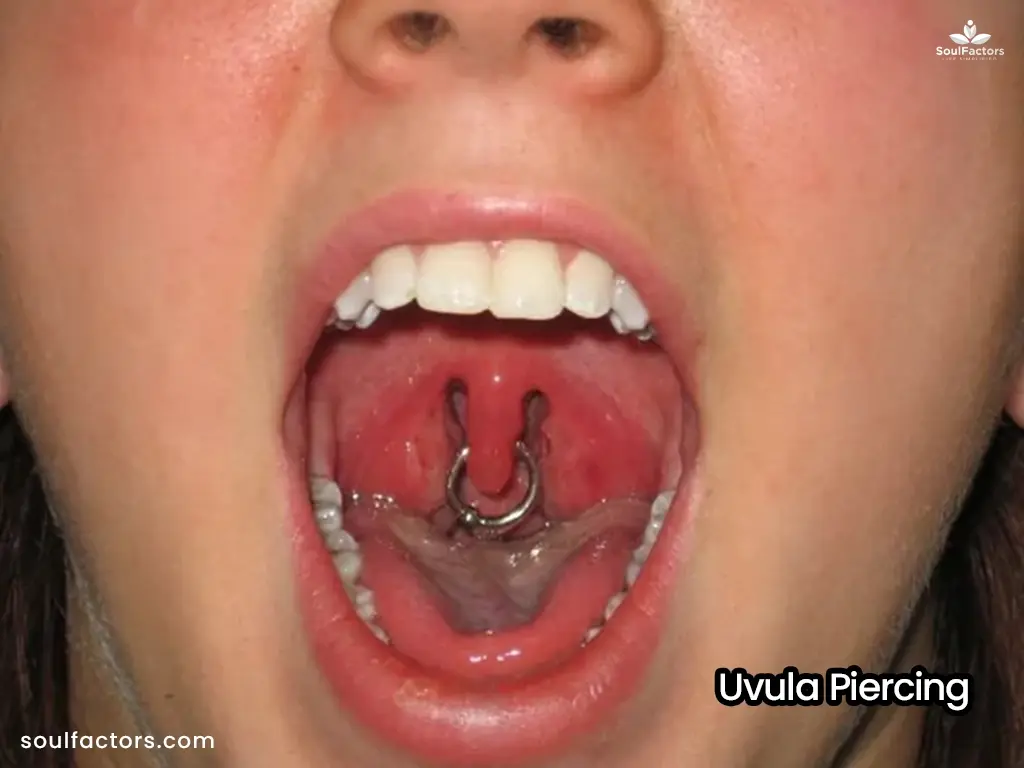
Do you think you can handle unusual art? Well, the uvula piercing opens the doorway to the world of crazy body modifications. A uvula piercing, sometimes humorously referred to as a tonsil piercing, can be an adventure in itself. This rare and intriguing piercing is not for the faint-hearted, as it embellishes one of the most unusual and sensitive areas – the uvula, that dangling structure you see at the back of the throat.
While not commonly seen, its appeal lies in the sheer uniqueness of its location- talk about a well-kept secret! It’s quite the commitment to keep your jewels hidden in plain sight, appealing to those seeking a body piercing that’s truly out of the ordinary.
Aftercare For Uvula Piercings
- How to Clean: Proper hygiene is crucial for uvula piercings. Due to its location, gentle rinsing with a saline solution or antimicrobial, alcohol-free mouthwash is recommended. It’s important to avoid harsh chemicals that could irritate the sensitive throat area. Regular gargling post-meals can help keep the area clean and free from food particles. However, be mindful of uvula piercing pain and ensure to follow all aftercare guidelines to avoid complications like an infected uvula or pierced uvula issues.
- Caring for an Infected Uvula Piercing: Infections, though rare, can occur. Watch out for symptoms like excessive redness, swelling, pain, or difficulty swallowing. If these occur, continue with gentle cleaning and consult a healthcare professional promptly. Avoid self-treatment or removal of the jewelry, as this may exacerbate the issue.
FAQs
Uvula piercings can be quite sensitive, given the area’s nature. Expect a sharp sensation during the piercing, followed by mild discomfort during the healing process.
People choose a uvula piercing for various reasons – from seeking an extreme form of body art to wanting a piercing that’s discreet yet bold.
While uvula piercings can be safe when performed by an experienced professional, they come with specific risks due to their location.
Potential side effects include increased saliva production, gag reflex sensitivity, and temporary speech adjustments. It’s a unique experience that requires careful consideration and commitment.
5. Tooth Piercings
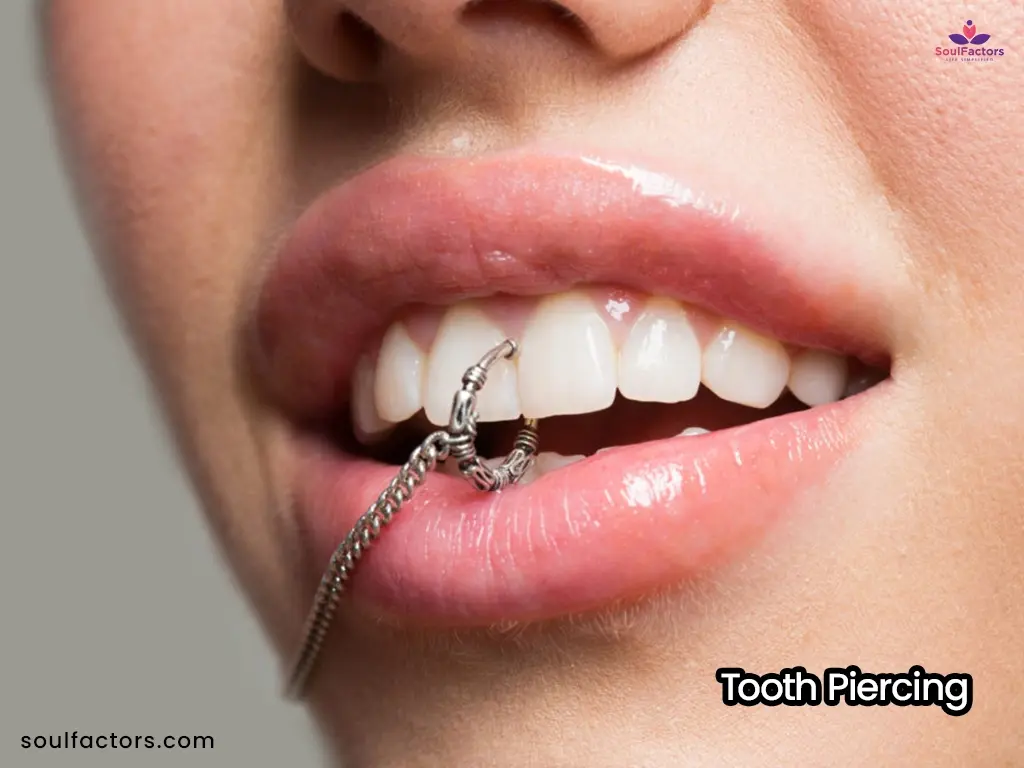
Tooth piercing, once a niche trend deeply rooted in rap and urban culture, has evolved into a widely recognized symbol of opulence and flair within the realm of body piercing. It’s not just a fashion accessory but a declaration of one’s persona, worn proudly by many celebrities and style icons. This dental art ranges from understated tooth gems to flashy grills, each serving as a unique emblem of personal taste and cultural influence.
These decorative enhancements to one’s smile, whether a sparkling diamond affixed to a tooth or an ornate gold grill, have become synonymous with contemporary fashion statements, merging dental aesthetics with individual creativity.
Aftercare For Tooth Piercings
- Cleaning Tooth Piercing at Home: Maintaining hygiene for a tooth piercing is crucial. For grills or removable gems, clean them regularly with products specifically designed for dental jewelry. Avoid using harsh chemicals that could damage the piece or your teeth. For permanent fixtures, brush gently around the area and use a mild mouthwash to prevent plaque build-up. Regular dental check-ups are also recommended to ensure the health of both the piercing and your teeth.
- Preventing Tooth Damage: When sporting a tooth piercing, be mindful of its interaction with other oral piercings. Tongue and lip piercings can potentially rub against tooth gems or grills, causing wear or damage. It’s important to choose smooth, well-fitted jewelry for tongue or lip piercings and to be conscious of their movement in your mouth. Regularly check your piercings for signs of wear and consult with a professional if you have concerns about tooth damage.
FAQs
Generally, getting a tooth gem or grill is painless, as they are often adhered to the tooth surface without invasive procedures.
Wondering are tooth piercings safe? When done by a professional and cared for properly, tooth piercings like grills or gems can be safe. However, long-term wear without proper hygiene can lead to dental issues.
Tooth gems are typically bonded to the tooth’s surface using dental-grade adhesives, while grills are custom-made to fit over the teeth.
Commonly known as tooth gems, grills, or dental jewelry.
To avoid damage from tongue or lip piercings, choose jewelry that doesn’t put pressure on teeth and maintain good oral hygiene.
Typically, flatter and smoother tooth surfaces are better suited for piercings to minimize damage and ensure stability.
Eyebrow Piercing
Eyebrow piercings and other body piercings have surged from the fringes to the forefront of fashion, capturing the attention of celebrities and style enthusiasts alike. This form of facial piercing has transitioned into a dynamic way of expressing individuality and flair. From the red carpet to the streets, it’s not just an adornment but a statement, blending seamlessly with various fashion sensibilities. Whether it’s a subtle stud or an elaborate ring, eyebrow piercings have carved their niche in the world of personal styling, becoming a coveted accessory for those looking to add an edge to their aesthetic.
Types Of Eyebrow Piercings
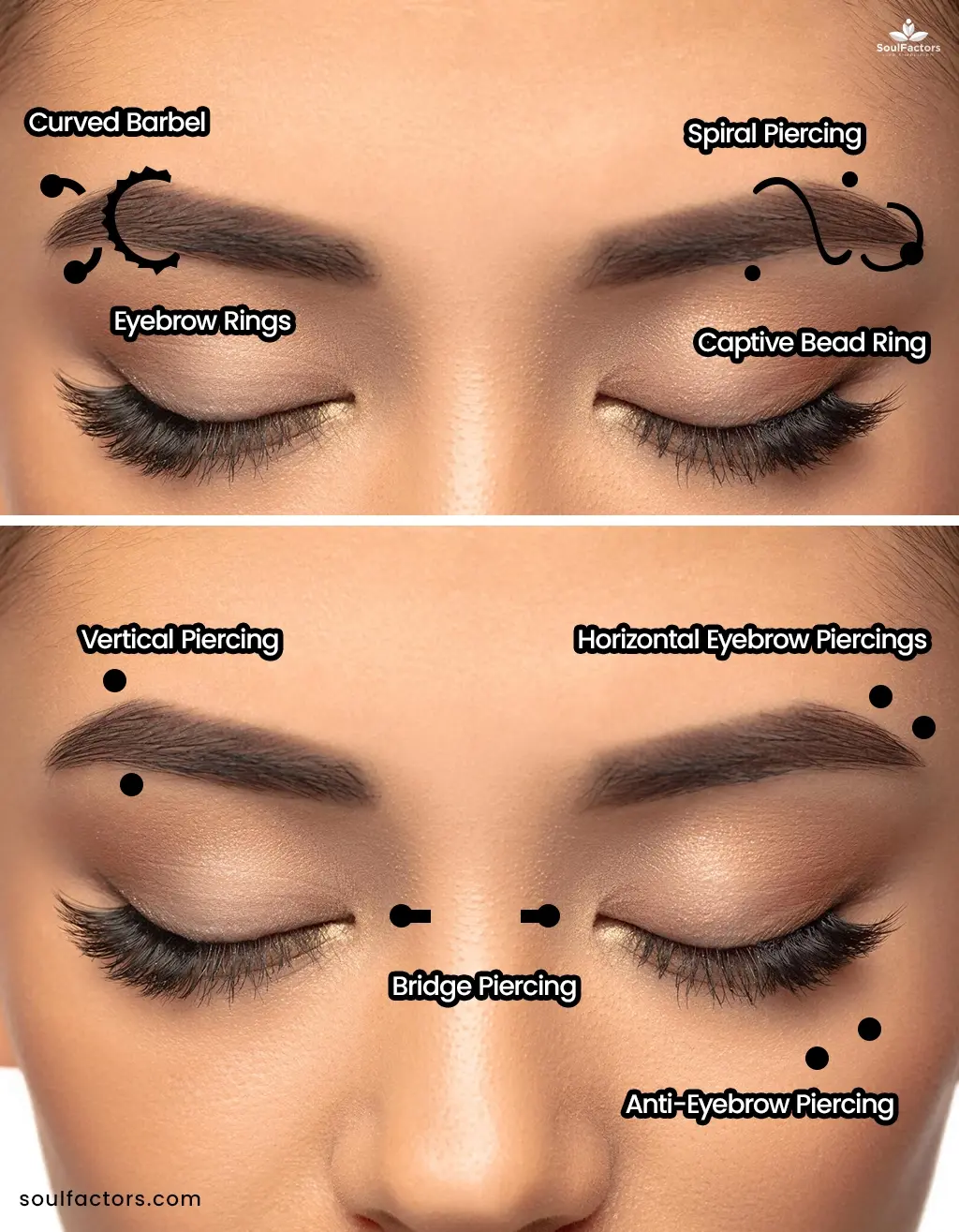
- Multiple Eyebrow Piercings: Donning more than one eyebrow piercing is a way to amplify your look and make a bolder statement. It’s about symmetry or creative asymmetry, offering endless possibilities for customization. Multiple piercings can range from a line of studs to a mix of rings, allowing for a highly personalized expression.
- Horizontal Eyebrow Piercings: Horizontal eyebrow piercings offer a twist to the conventional style by aligning parallel to the brow line. This placement creates a striking visual impact, setting apart those who choose it as fashion-forward and daring in their aesthetic choices.
- Vertical Piercing: The classic vertical eyebrow piercing remains a popular choice for its straightforward yet impactful appearance. It usually involves a single piercing that goes directly through the eyebrow, allowing for a variety of jewelry styles, from subtle studs to eye-catching barbells.
- Anti-Eyebrow Piercing: Situated just below the eye, the anti-eyebrow piercing, also known as ‘teardrop’ or ‘butterfly’ piercing, offers an alternative to traditional eyebrow piercings. Its position makes it both intriguing and subtly defiant, appealing to those seeking something different.
- Spiral Piercing: Spiral piercings in the eyebrow area are all about adding a twist, quite literally. These involve a spiral-shaped jewelry piece that weaves through multiple piercings, creating a dynamic and swirling effect that catches the eye.
- Bridge Piercing: Positioned on the bridge of the nose, between the eyes, bridge piercings are a bold choice. They’re a statement piece, often using barbells, that stands out for their unique placement and the distinct character they bring to the wearer’s facial features.
- Curved Barbell: Curved barbells are a common choice for eyebrow piercings, fitting the natural curve of the brow. They’re versatile and comfortable, available in various sizes and designs to suit individual preferences and styles.
- Captive Bead Ring: Captive bead rings, featuring a bead held in place by the tension of the ring, are a popular choice for eyebrow piercings. They offer a classic look and are easily customizable with different bead designs.
- Eyebrow Rings: Eyebrow rings come in various styles, from simple hoops to more elaborate designs. They allow for personal expression and can be changed to match mood, occasion, or style, making them a versatile option for those with eyebrow piercings.
| Are eyebrow piercings difficult to heal? Healing can vary depending on individual factors and adherence to aftercare instructions. Generally, with proper care, they heal well. Why do people get eyebrow piercings? Reasons vary from personal aesthetics and fashion statements to self-expression and identity. It’s a popular choice for those seeking to add an edge to their look. |
Aftercare For Eyebrow Piercings
- Cleaning the Piercing: To ensure optimal healing, clean your eyebrow piercing twice daily with saline solution or a mild, fragrance-free soap. Gently pat dry with a clean, disposable paper towel – cloth towels can harbor bacteria. Avoid using alcohol-based solutions or hydrogen peroxide as they can irritate the skin. Keeping the area clean and dry is key to preventing infections and promoting a smooth healing process.
- Healing Process: An eyebrow piercing typically takes about 6 to 8 weeks to heal. During this time, it’s normal to experience some redness, swelling, and minor discomfort. Watch out for signs of infection like excessive redness, pus, or prolonged pain. Avoid touching or twisting the jewelry unnecessarily, and be cautious with makeup or skincare products around the body piercing area. Consult with a professional if you notice any concerning symptoms.
FAQs
The body piercing price typically ranges from $30 to $70, varying based on the piercing studio and the type of jewelry chosen.
On average, an eyebrow piercing takes about 6 to 8 weeks to heal fully.
The pain is usually a quick, sharp sensation during the piercing, with some individuals experiencing minor discomfort during the healing process.
Cheek Piercing/Dimple Piercing
Far from the mainstream, these body piercings have woven their way from a goth subculture into broader fashion narratives, offering a unique blend of audacity and charm. They’re not just about adorning the face; they’re a statement of individuality. Whether it’s for the allure of mimicking natural dimples or making a bold, unconventional statement, cheek piercings have emerged as a captivating choice for those looking to add an intriguing twist to their facial features. It’s a daring venture, one that speaks volumes about the wearer’s personality and style.
Types Of Cheek Piercings
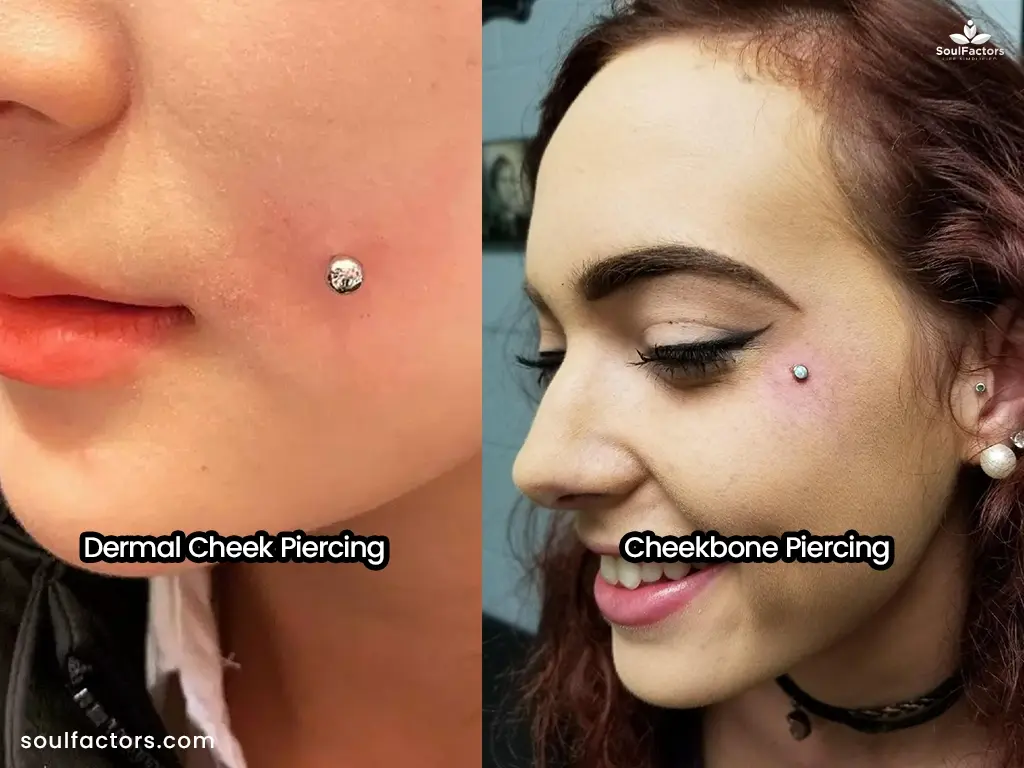
- Dermal Cheek Piercing: This piercing type involves a single-point insertion into the cheek, creating a subtle yet distinctive look. The dermal anchor sits under the skin with a visible stud or gem on top, offering a sleek and modern aesthetic. Popular in various subcultures, including goth, it allows for a range of customization with different jewelry styles.
- Cheekbone Piercing: Positioned closer to the cheekbone, these body piercings can create a dramatic effect, highlighting facial features. They’re often seen in pairs and can be adorned with various jewelry types, from small, understated studs to more elaborate designs that capture the essence of Gothic elegance.
Aftercare For Cheek Piercings
Maintaining your cheek piercing is crucial for a smooth healing process. Clean the area twice daily with a saline solution or a gentle, fragrance-free soap. Pat dry gently with a clean paper towel to avoid irritation. Swelling is normal in the first few days of body piercing; using a cold compress can help reduce it. Be vigilant for fluid pockets – if they appear, continue with regular cleaning and consult your piercer for further advice. Avoid sleeping on the body piercing and minimize facial movements that could stress the area. Remember, a consistent aftercare routine is key to the health and longevity of your “cheek dermal piercing” or “upper cheek piercing.”
FAQs
Commonly known as a dimple or “cheek dermal piercing.”
The cost varies, typically ranging from $50 to $100 per piercing.
Apply warm compresses and maintain a stringent cleaning regimen. Consult a professional if the issue persists.
Keep the area clean and avoid touching it. If symptoms worsen, seek medical advice.
While some may experience lasting indentations, results vary.
Cheek piercings are secured with appropriate jewelry, often with a flat back to sit comfortably inside the mouth.
Navel Piercing
Navel piercings have ascended from a trend to a timeless staple in the world of body piercing, captivating enthusiasts with their unique blend of allure and personal expression. Adorning the belly button, these body piercings offer an individualistic way to celebrate one’s body, making them a perennial favorite among diverse crowds. They stand out not just for their aesthetic appeal but also for their versatility in style and jewelry options. From classic rings to intricate dangling designs, navel piercings have evolved to cater to various fashion senses, embodying both the essence of personal style and the spirit of contemporary body art.
Types Of Navel Piercings
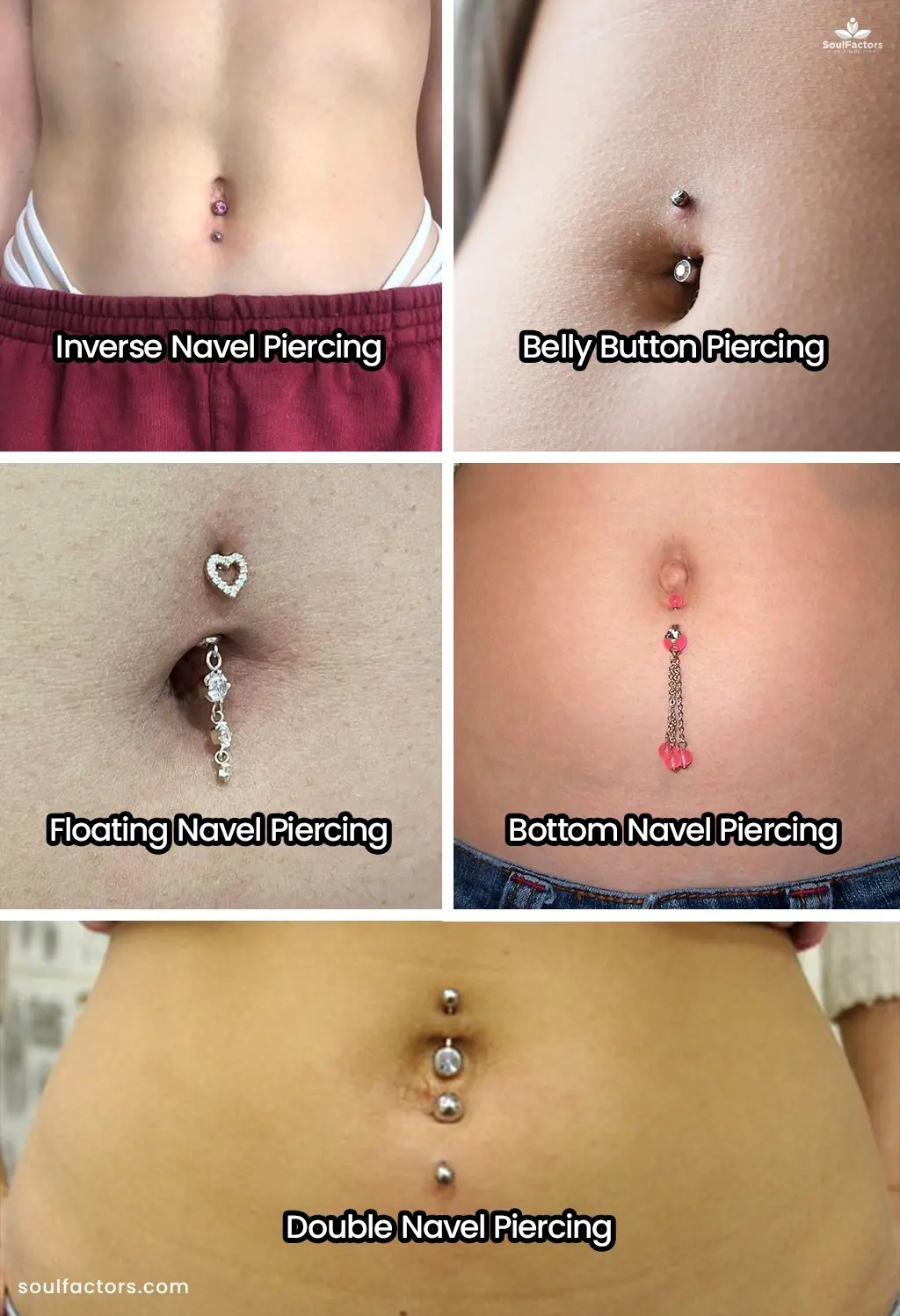
- Inverse Navel Piercing: The inverse navel piercing is an enticing variation where the jewelry is placed on the lower lip of the navel. This type offers a unique twist to the classic belly button piercing, creating an upside-down effect. It’s particularly eye-catching when adorned with sparkling gems or delicate dangles, making it a stylish choice for those looking to add a touch of unconventional charm to their midriff.
- Belly Button Piercing: The quintessential belly button piercing is a timeless choice, piercing through the upper fold of the navel. It allows for a wide range of jewelry styles, from simple studs to ornate rings that can be flaunted with midriff-baring outfits. This traditional style remains popular for its versatility and the ability to easily customize its look with various jewelry designs.
- Floating Navel Piercing: Ideal for individuals with less pronounced or flat navels, the floating navel piercing offers an elegant solution. This style uses a curved barbell that appears to ‘float’ on the navel’s surface, providing an understated yet chic appearance. It’s a subtle alternative that still captures the essence of navel piercings.
- Bottom Navel Piercing: Positioned on the lower part of the belly button, the bottom navel piercing adds an intriguing element to the navel area. It can be a standalone style or paired with a traditional upper navel piercing for a coordinated look. This placement is perfect for those who want to experiment with their body piercing layout.
- Double Navel Piercing: Doubling the allure, the double navel piercing features two piercings, usually one above and one below the navel. This style opens up possibilities for creative jewelry combinations and can range from symmetrical designs to contrasting pieces. It’s a statement choice for body piercing enthusiasts who love to showcase their unique style.
Aftercare For Navel Piercings
- Cleaning the Navel Piercing: To ensure your navel piercing heals well, clean it twice a day with a saline solution or a mild, fragrance-free soap. Gently apply the solution using a clean cotton pad or swab, carefully cleaning around the jewelry and body piercing site. Avoid twisting or moving the jewelry excessively during cleaning. It’s crucial to keep the area dry, so pat it gently with a clean, disposable paper towel after cleaning. Proper hygiene is key to preventing infections and ensuring a smooth healing process for your navel piercing.
- Dealing with Infected Navel Piercings: Recognizing an infected navel piercing or any body piercing for that matter, is crucial for timely treatment. Signs include redness, swelling, warmth, unpleasant odor, or discharge. If you suspect an infection, continue cleaning as usual but avoid using alcohol-based products, as they can further irritate the skin. Consult a healthcare professional for appropriate treatment, which might include antibiotic creams or oral medications. Do not remove the jewelry unless advised by a healthcare provider, as it can lead to abscess formation. Regular saline soaks can also help alleviate symptoms and promote healing.
FAQs
A navel piercing typically takes 6 months to 1 year to fully heal.
The pain level varies; most describe it as a sharp pinch followed by mild soreness.
Ensure you go to a reputable piercer who uses sterile equipment. Consider your lifestyle and wardrobe choices that might affect the piercing.
Opt for a “navel piercing ring” that suits your style but is also comfortable and made of body-safe materials.
“Navel piercing infected” situations and “navel piercing during pregnancy” require special attention and care. Always consult a professional for advice on “how to clean navel piercing” properly and for sizing considerations, such as “standard navel piercing size” and “bottom navel piercing.”

Subscribe to Newsletter
Elevate your routine, stay on trend, and embrace a personalized beauty journey with our curated insights.


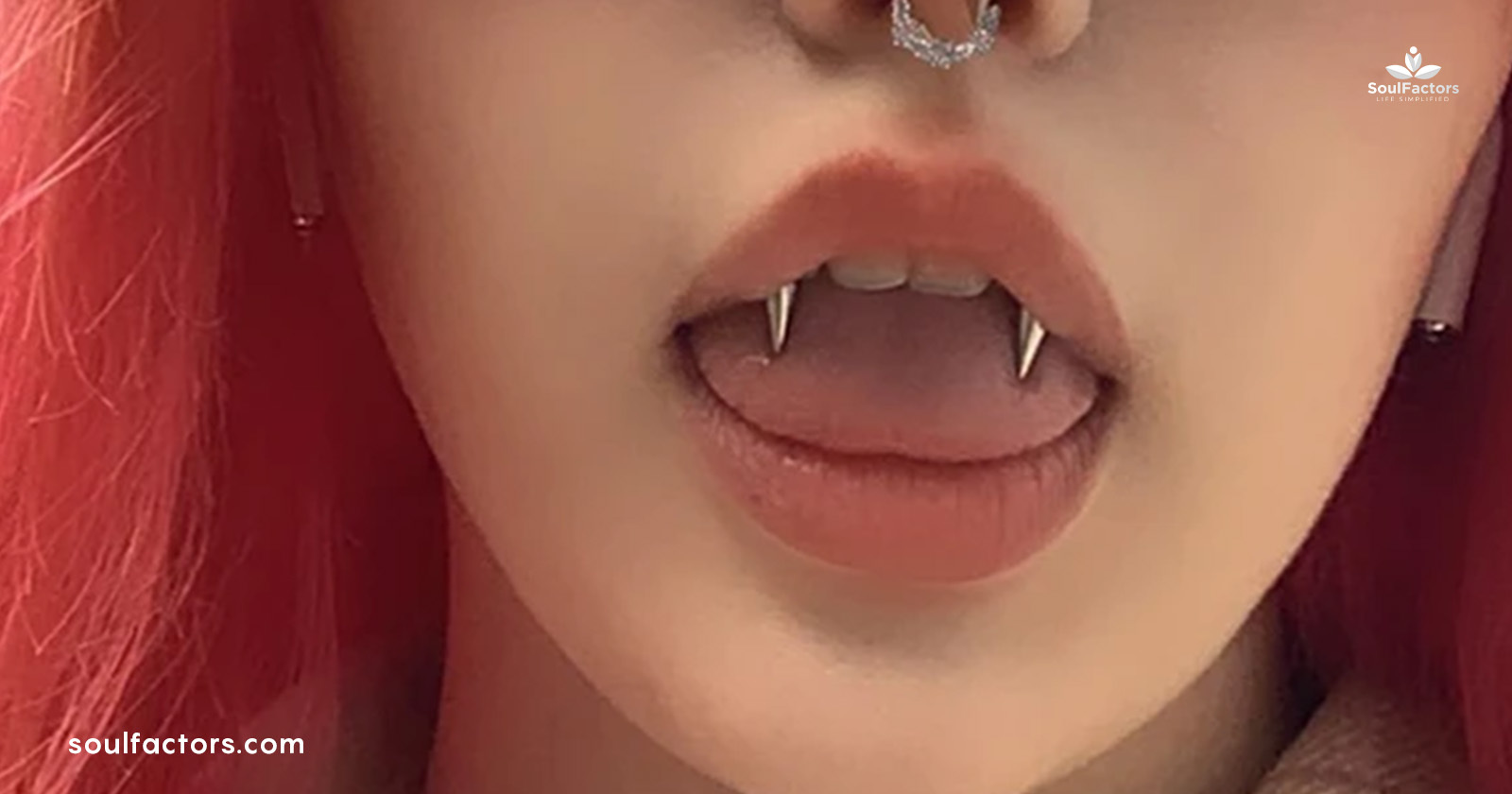
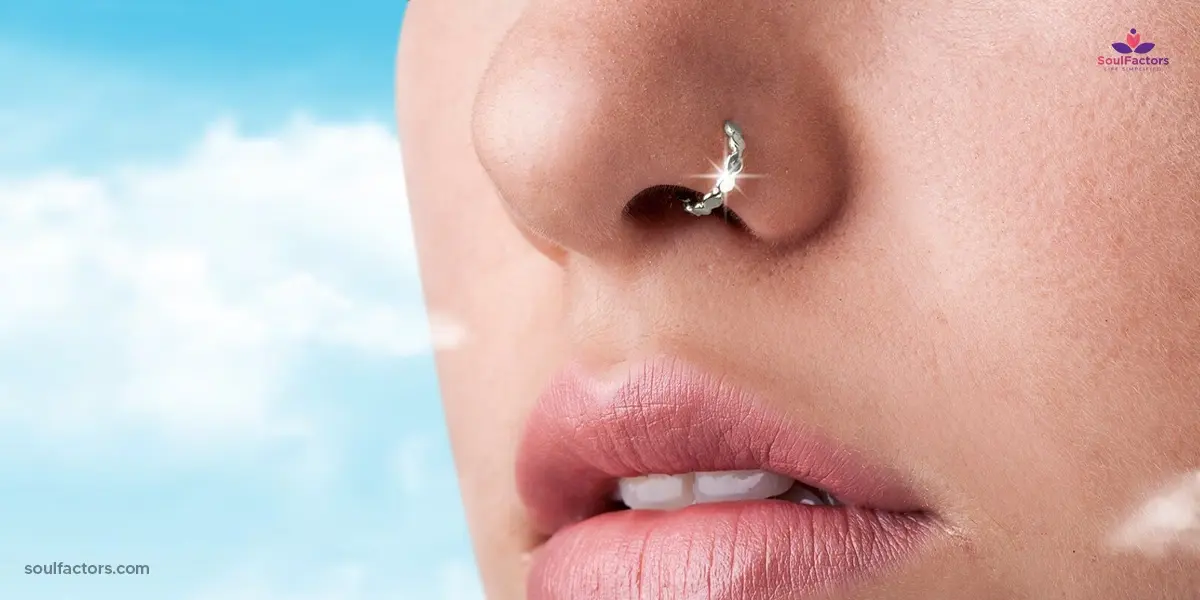
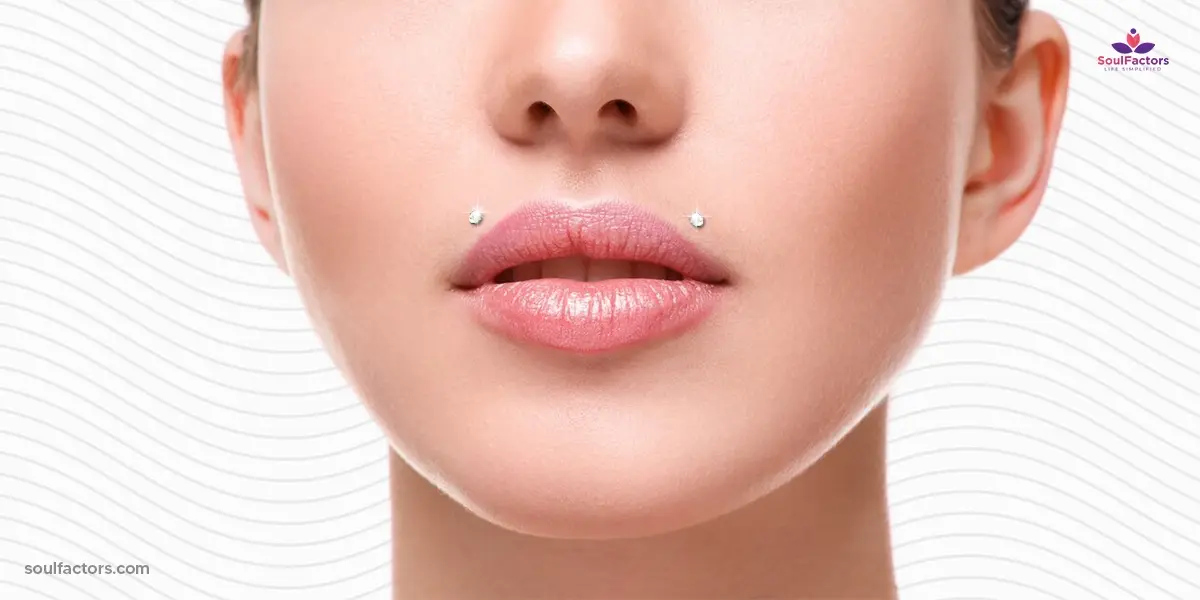
Write a Comment